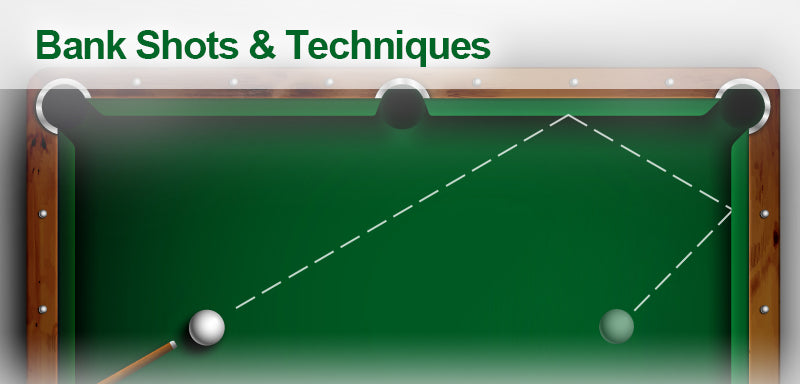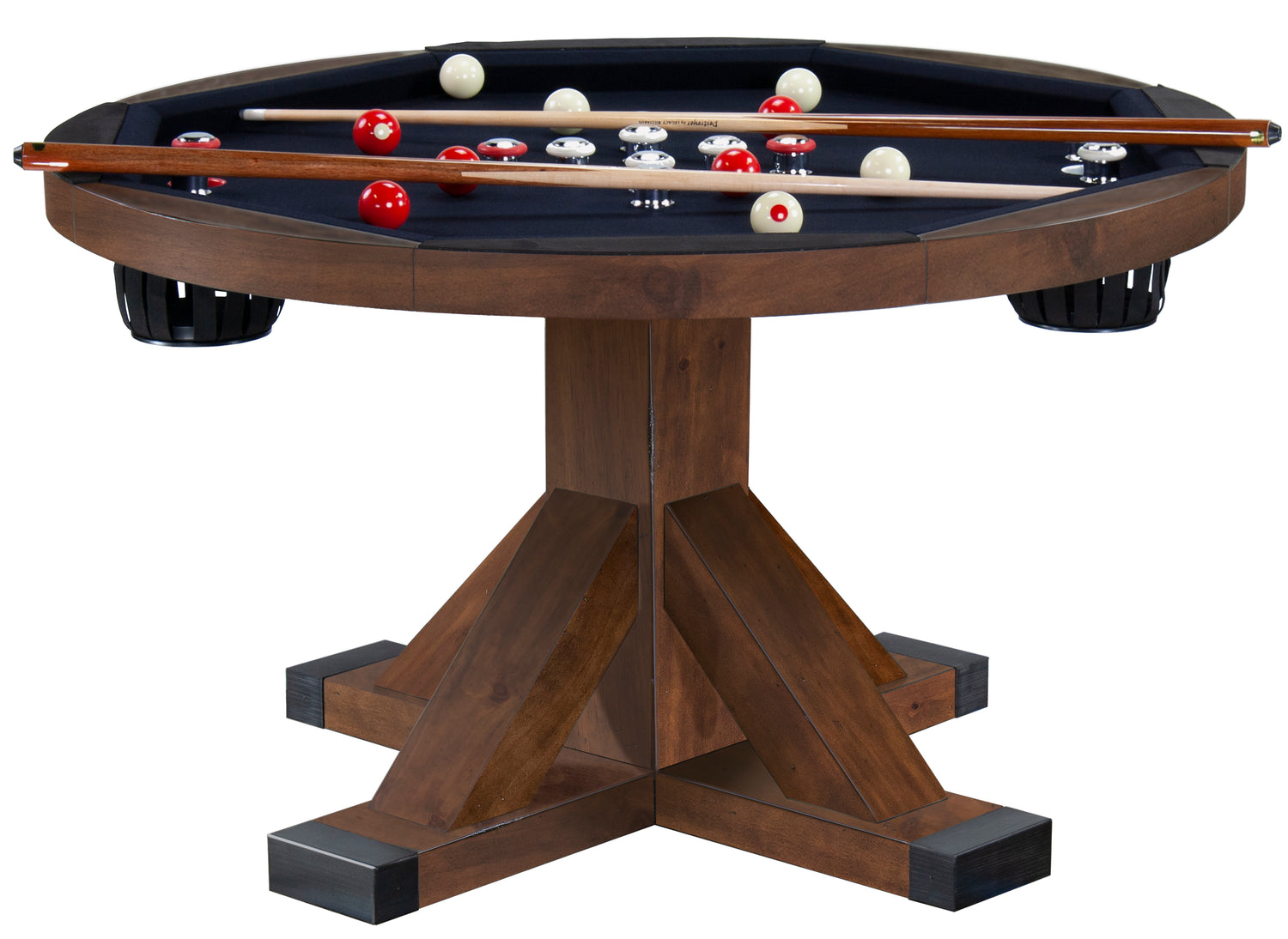Bank shots are both impressive to watch and also an integral part of any good pool player’s arsenal. In fact, they are critical to the game when no other shots available. To master them takes patience, practice and a basic understanding of physics and geometry. When considering bank shots in general, the simplest approach is to think of equal angles. With medium force applied, a target ball shot at one angle should in theory rebound off of the side cushion at an equal force and angle. This is but one of the many systems of bank shots. These systems of shot play could also be considered theories because of the many outside factors that influence them, but with practical application those theories time and time again prove to be realistic foundations for practice. Outside Influences on Bank Shots:
• Speed of the stroke. • Application of side-spin (English) • Speed of the pool table (IE: cloth material and rebound of side cushions)
While there are a multitude of systems and theories for banking shots, below is a breakdown of two of the most basic forms: Technique / System Types Mirror Systems- This is probably the simplest of the techniques used to master bank shots. In essence it is a visualization method used to make the bank shot using input output reasoning. Mirroring can also be broken out into two subsections:o Equal Angle (angle in equals angle out) – As discussed above, this system operates on the theory of equal force and equal angles to produce an expected result. For example, in this visualization the focus should be on the diamonds running down the side and end rails of the pool table. These diamonds exist for techniques such as this. For this system imagine the cue ball near the rail but two diamonds to the left of the side pocket nearest the player. The target ball is in the center of the table and slightly to the right of the cue ball. To bank the shot back into the side pocket nearest the player, the target ball should be struck to hit the side rail one diamond to the left of the side pocket opposite the player. The result should be a mirrored angle where the target ball rebounds from the rail back into the pocket near the player.
o Ghosting – In this system, a ghost table is imagined parallel to the real pool table with side rails overlapping and pockets set within pockets. This system is the same as the equal angle system only instead of using the diamonds the player visualizes shooting the target ball into pockets of the ghost table. The same results should apply to a similar shot layout as mentioned above.
X System - This method is more advanced than the mirroring system, but tends to be more accurate overall. In this system, considering a similar setup with the cue ball and target ball in the explanation above, imaginary lines are used to find the exact placement of where the target ball needs to hit the opposite rail. Here are the steps:1. Use the cue stick to find the trajectory from the center of the target ball straight into the side pocket on the opposite side of the table (the pocket opposite from the desired destination). 2. Imagine a straight line from the target ball to the side cushion across the table. 3. From the identified point on the side cushion imagine a straight line back into the center of the destination pocket. (Where this line crosses the cue stick is the “X”) 4. From the “X” imagine a straight line into the side cushion across the table. (This is the exact location there the target ball needs to strike the opposite cushion in order to land in the destination pocket.)



